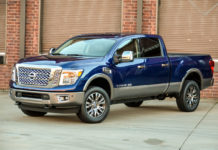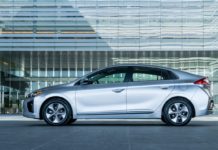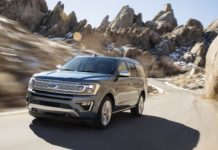Two decades after Americans abandoned diesels as smelly, loud and unreliable, German and Japanese automakers are placing bets that they can entice a new generation of drivers with clean diesel technology.
Japan's Honda Motor recently announced plans to introduce clean diesel under its luxury Accord brand next year, while Toyota Motor said Sunday it would bring diesel versions of its Tundra truck and Sequoia sports utility vehicle to the US “in the near future.”
Germany's Daimler has reported strong diesel sales among buyers of its luxury Mercedes brand and is bringing three new diesel SUVs to the US market this year, while both BMW and Volkswagen will bring diesel cars to US showrooms this fall.
But while foreign automakers are trying to entice consumers to buy the performance and fuel economy of diesel, US automakers are shaking their heads.
“It's not something I see being a major factor in the US car market,” GM chief executive officer Rick Wagoner told reporters on the sideline of the Detroit auto show.
“You will see us expanding our diesel offer, primarily for heavier vehicles because we see that's where the application is clearest,” he said, adding that GM could rapidly introduce the diesels it currently sells in Europe to the United States if conditions change.
While Ford Motor Co. is planning on bringing diesel to its lighter duty Ford F-150 pickup truck in 2010, it has no plans yet to introduce clean-diesel into smaller vehicles, a spokesman said Tuesday.
Instead, it plans to build half a million vehicles a year with its newly introduced Ecoboost system that can provide fuel economy savings of up to 20 percent at a more affordable cost.
Diesel offers about a 30 to 35 percent improvement in fuel economy compared to gasoline, but the technology needed to meet stringent new emissions rules imposed here last year adds between two and three thousand dollars to the cost.
That's less than the three to five thousand dollar markup on most gas-electric hybrids, which often fail to deliver equivalent fuel economy savings in typical US driving conditions.
But unlike in Europe, where higher gas taxes pushed consumers towards diesel, American consumers have been reluctant to buy diesels in anything but heavy-duty trucks following a disastrous introduction in the early 1980's.
In response to an onslaught of small cars from Asian automakers during the last oil crisis, US automakers rushed diesel engines to market which were so poorly designed they would break down after about 30,000 miles.
Diesels currently only account for about 3.5 percent of vehicles sales in the US, compared to around 60 percent in Europe.
“When Honda is committed to a diesel, now I know it's time for diesels,” Karl Brauer, editor in chief of Edmunds.com, said in a recent interview.
“We're seeing enough items align in terms of fuel prices and really good versions of diesels that aren't loud and clackety and smelly and smoky that diesel's got a better chance now then it's ever had in the past.”
The biggest threat to the expansion of diesel in the United States is the concern among automakers that emissions regulations could be tightened even further, said John Wolkonowicz, an analyst with Global Insight.
“Because diesels are very torquey at low speeds, they're really fun to drive, so I think diesels could be a way to both maintain the fun to drive that Americans like so much while improving the overall fuel efficiency of the vehicle,” he told AFP.
“But the auto manufacturers are hesitant to bring lots of diesels into the US because the legislative picture isn't clear yet.”








